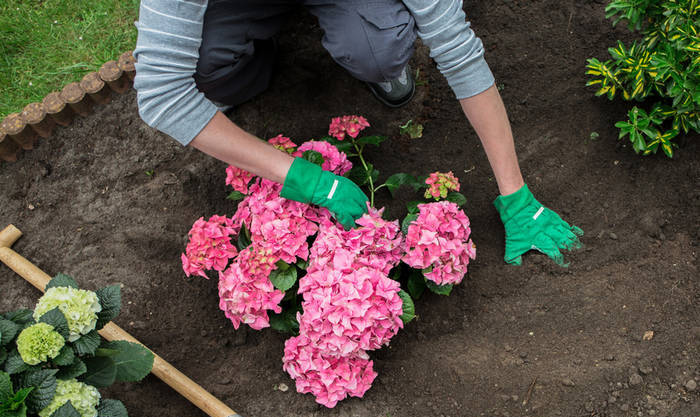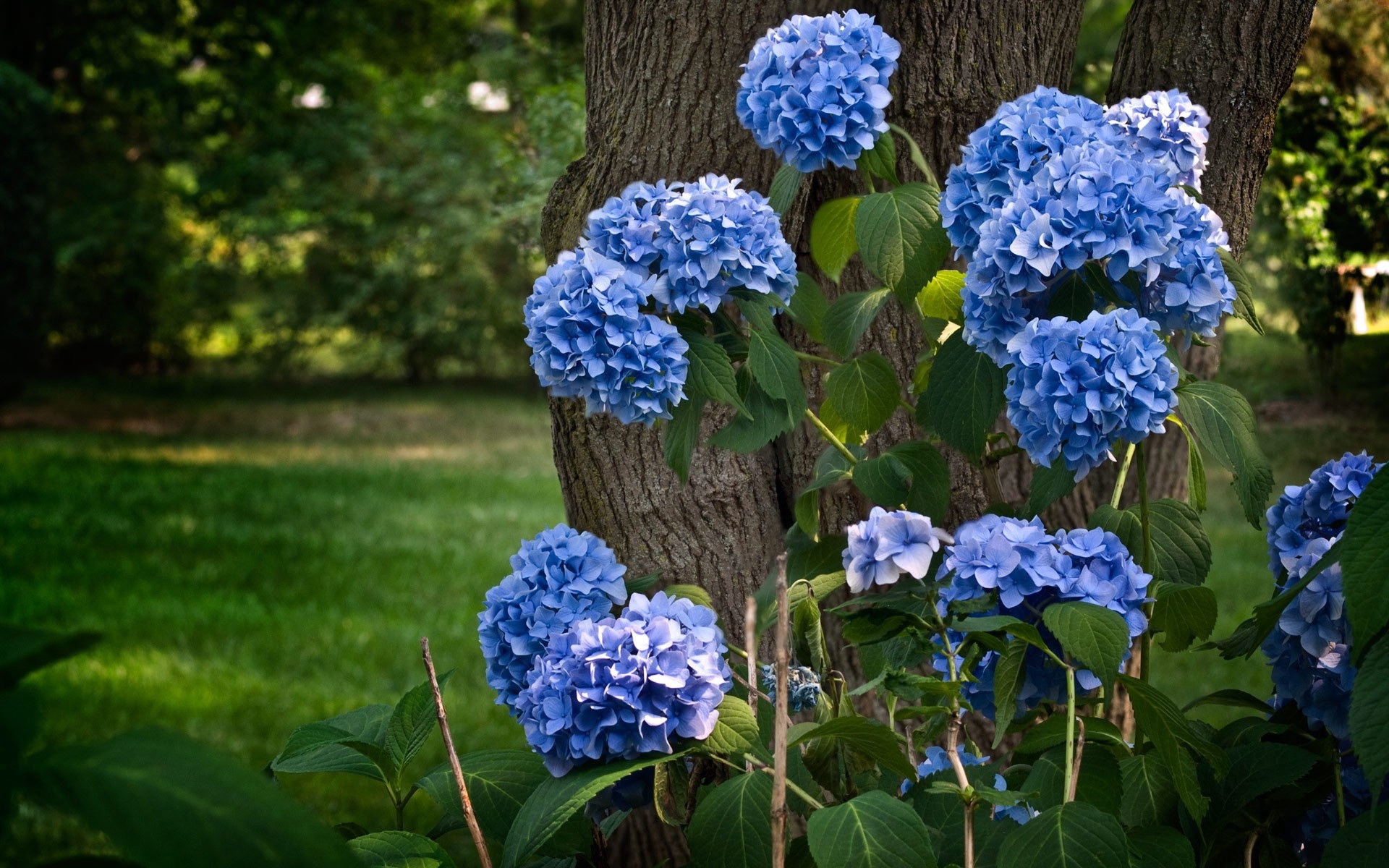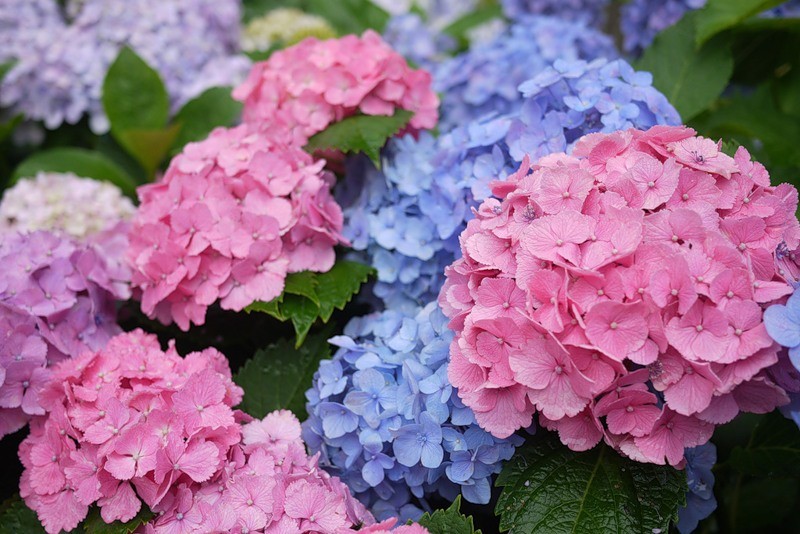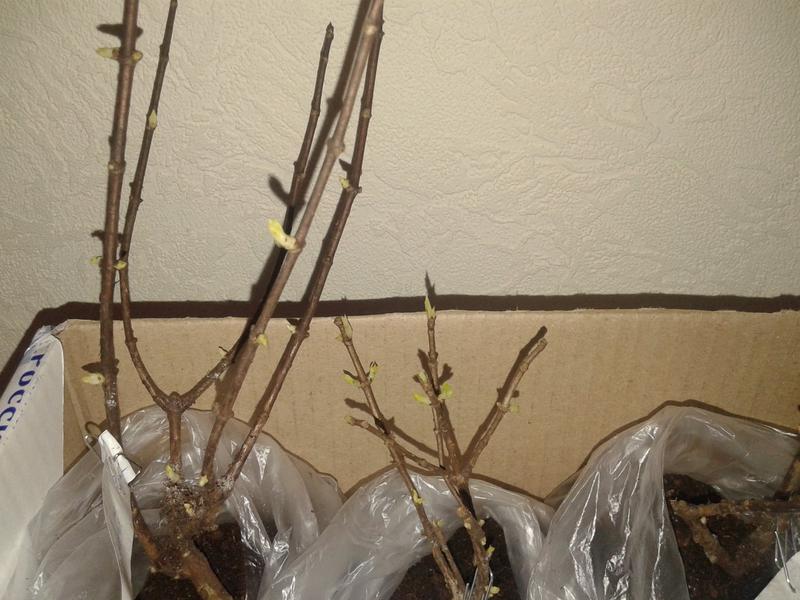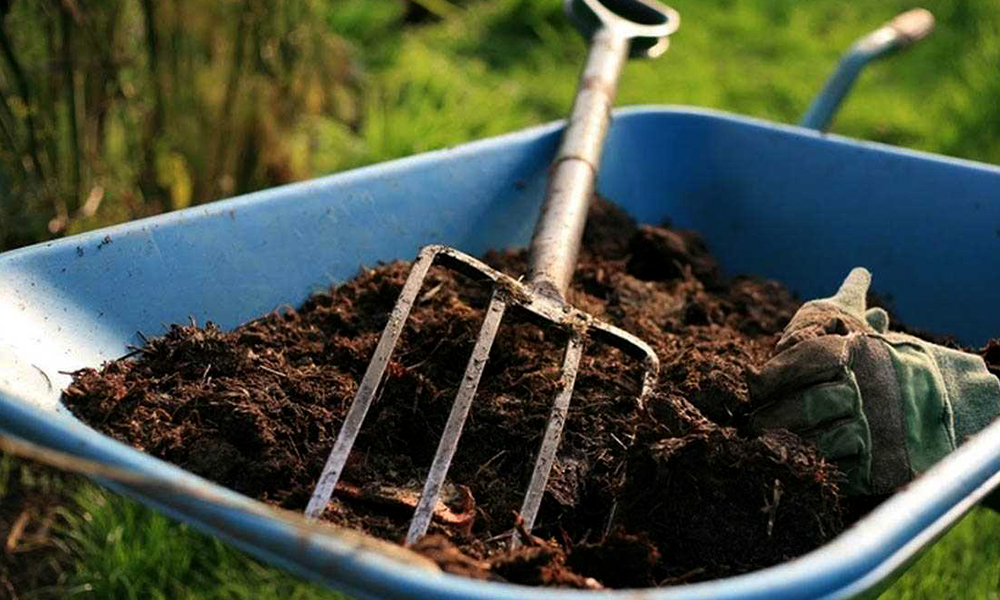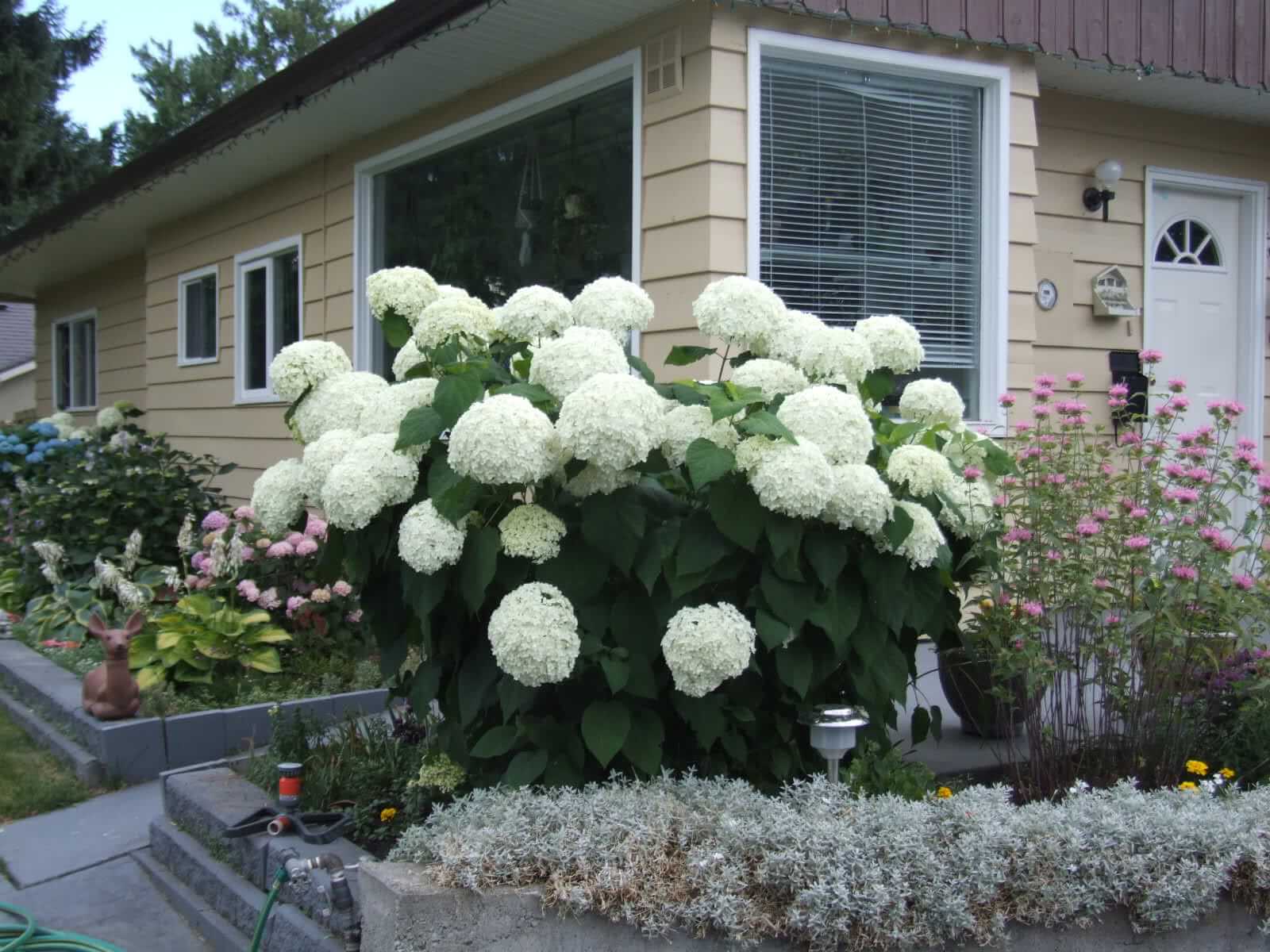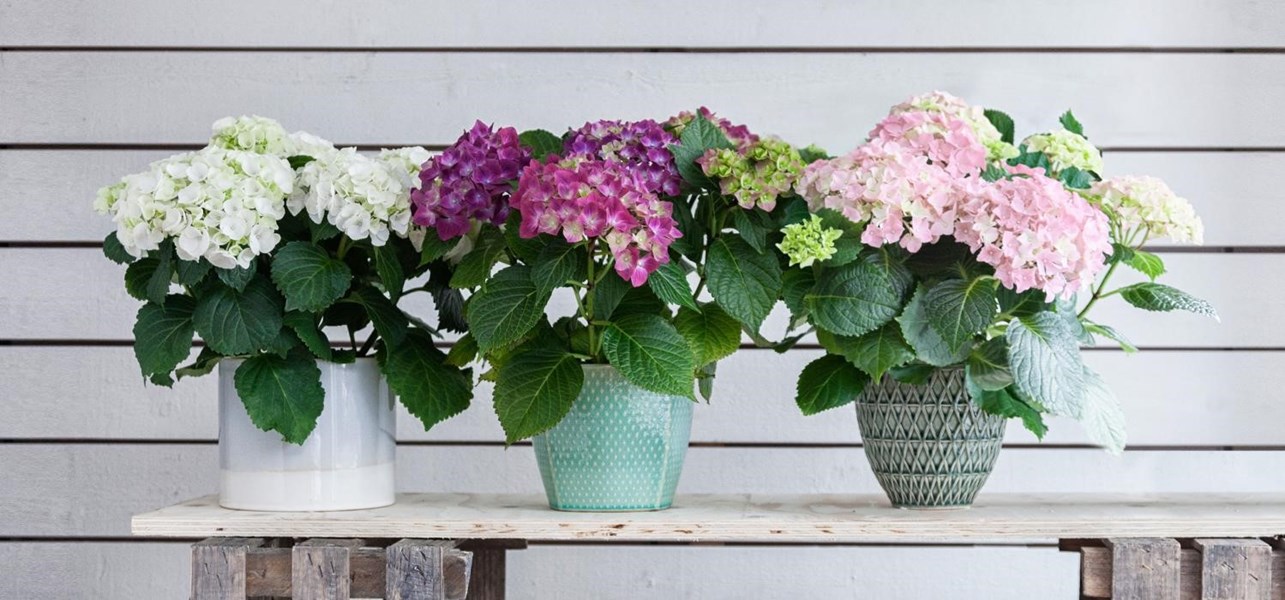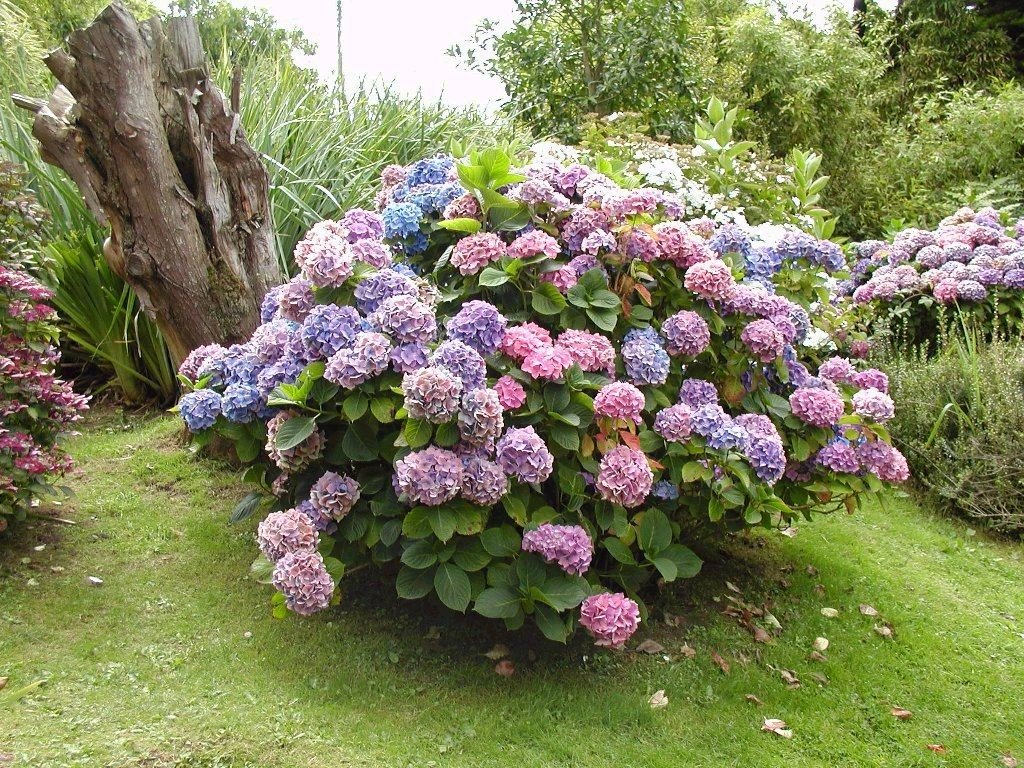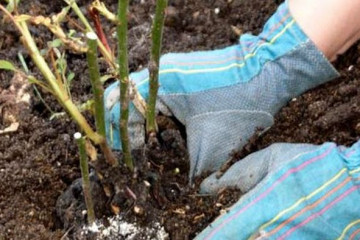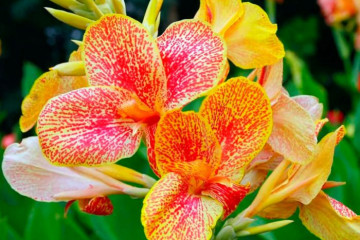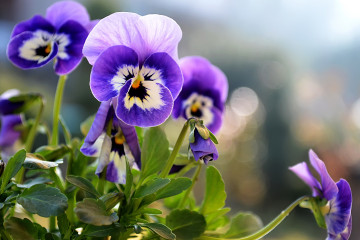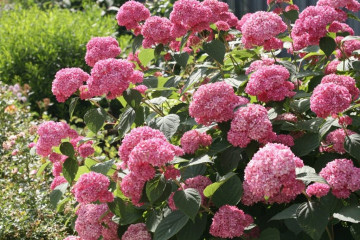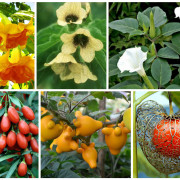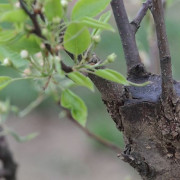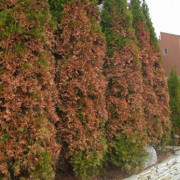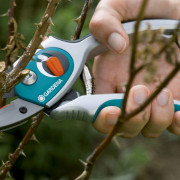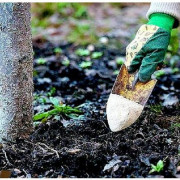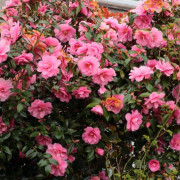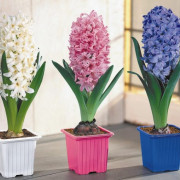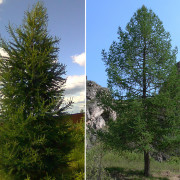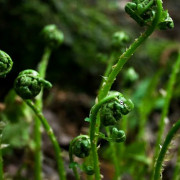Planting hydrangeas outdoors in spring
A person who has seen a hydrangea in bloom at least once will be delighted and may even decide to plant it in his country house or in front of his house. Different types of hydrangeas (lush bush, tree or liana) will decorate any garden. You can even grow a perennial in a shaded area.
Experienced gardeners warn that the plant is demanding. In order for it to take root, you must first choose the place correctly, and then carry out the planting work. In addition, the care of hydrangea should also be worthy, especially in the first year of life of the now fashionable flowering bush.
About the flower
A decorative perennial can live up to fifty years. This is a shrub or small tree with very beautiful spherical flowers of various colors. There are several types of flowers popular in Russia. Each of them has its own characteristics. The types are distinguished:
- paniculate;
- tree-like;
- curly;
- large-leaved.
The paniculate species is a compact bush (up to 1-1.2 m in height and width) with many lush inflorescences in the form of irregular cones. Many owners of summer cottages in the Moscow region prefer this particular variety for its compactness and resistance to the winter cold.
The tree species is a solid, healthy shrub that is also not afraid of frost. Suitable for growing in the central part of Russia and the Urals. Usually it grows up to 1.7-2.2 m.
For most varieties of climbing hydrangea, winter is also not scary. The peculiarity of this species is that it is a flowering liana. She is able to decorate an entire wall of a house, as a result, the dacha will turn into an unusually beautiful green castle.
The large-leaved species is a favorite of many experienced florists. This is a shrub that stretches up to 3 meters in height. It has large leaves and spherical inflorescences. With proper care, it can bloom for 2-3 months.
Outdoor planting recommendations
Planting hydrangeas in open ground in spring is typical for regions with temperate and warm climates. In the central part of the country, it is best to plant the dream of many gardeners closer to the beginning of May.
In more northern regions and in the Urals, planting is organized in the first or second decade of May, depending on the weather. In the south, flowering shrubs are planted in March - very early April.
Spring planting allows the plant to quickly take root and survive the summer calmly. By winter, the specimen is gaining strength.
It is best to purchase a seedling of a plant in specialized retail outlets and proven nurseries. When choosing a suitable planting material, you should pay attention to:
- Sapling age. The most suitable age is at least 2 years old.
- Appearance. The bush should have two or three shoots without deformations and cuts, strong elastic leaves (if foliage is present).
- Root system. If it is open, then the roots of a healthy specimen are elastic, not dry, there is not even a hint of mold on them.
Step-by-step landing instructions
After the purchase is made, the plant should not be stored for a long time. It is best to take him to the dacha immediately. How to plant a hydrangea outdoors in the spring? Step-by-step instructions mean the following points:
- Before planting a hydrangea, you should prepare a planting pit. Experienced gardeners are strongly advised to do this well in advance, for example, at the end of autumn or as soon as the snow melts.
- To do this, a hole is dug 30-45 cm deep, 35-45 cm wide and 35-45 cm long. The size of the hole, first of all, depends on the size of the roots. It is necessary to dig such a hole so that the roots are not cramped.
- Drainage is laid out at the very bottom. It can be stones, expanded clay, branches.
- Together with the garden soil, sod, humus, and various types of peat are laid out in the hole. The ingredients must be in equal amounts.
- The substrate is mixed. Part of it is taken out to place the rhizome in the pit.
- The bush should be planted carefully so as not to damage the rhizome. The root collar must be left at the level of the trunk circle.
- The next stage is abundant watering and mulching. Peat and hay are suitable as mulch.
Tips for choosing a landing point
A place for a lush flowering bush should be chosen carefully. Otherwise, the perennial will not take root.
Before planting a hydrangea, you should know that its root system is superficial. She gets food from the upper soil layers. In view of this, shrubs should not be placed next to crops that have a shallow root type. Among these plants:
- round-leaved irga;
- mountain pine;
- magnolia;
- western thuja, etc.
The best neighbors are taproot plants. For example:
- Siberian larch;
- red cedar;
- pear;
- English oak;
- laurel poplar, etc.
Hydrangea planting and care in the open field for beginners means choosing a place where direct sunlight does not fall all day long. It is enough if the sun will warm the foliage in the late afternoon. The rest of the time, the bush should be in shade.
The preferences of the plant are such that it does not like moving around the site. That is, he should have only one permanent place of residence. This does not apply to tiny plants that can be raised by layering. They are deposited from the maternal specimens within a year after the formation of roots.
Other important points to consider before planting a hydrangea are:
- soil requirements;
- distance between instances;
- landing scheme.
The soil
The soil in the chosen location should be slightly acidic or neutral. The alkaline earth is acidified. The best soil is one with a pH of 4.9-6.3. Roughly the same soil can be found in deciduous forests. Another condition for the soil is that it must be fertile, moderately loose, enriched with organic matter. In poor land, the plant will begin to starve. Following agricultural practices, the seedling should not be placed in heavy clay soil.
The gap between the bushes
The flower is very fond of freedom, large spaces. The reasons for this are the growing root system and spreading shoots. For a small area, hydrangea is not suitable. It is not recommended to plant seedlings in the immediate vicinity of garden paths. In a few years, when the plant stretches out and gets stronger, branches with flower heads will be on the pedestrian zone. This will make it difficult to move around the site.
Many gardeners decide to plant 5-10 copies at once as a hedge. In this case, the bushes should be planted at a distance of 60-80 cm from each other.
Landing scheme
When creating a hedge, the planting pattern looks like this:
- the distance between the bushes is 60-80 cm;
- between the bushes and the path - 1 meter;
- the gap between the hydrangea hedge and other plants is 1-1.5 meters.
When creating a flower garden with perennials according to the scheme, hydrangeas are planted in the middle or background, depending on the desired height of the flower bed. It is preferable to arrange the flower garden with two hydrangeas, which will grow one and a half meters from each other. The distance between other flowers and spectacular shrubs is 40-70 cm each.
With the planting scheme, as a single decoration of the site, the hydrangea is planted in such a way that the distance to other crops is at least 1.2-1.5 meters.
Planting hydrangeas in spring with seedlings
Before defining a shrub for permanent residence, it is important to properly prepare it. Only in this case will the plant take root.
Preparation tips:
- The seedling is removed from the bag and placed in a bowl of water in which a growth stimulant is dissolved, for example, Kornevin, beta-indoleacetic acid.
- The roots are slightly trimmed. It is enough to take away 3-6 cm from the strongest elastic roots.
- The aerial part is also shortened. 4-7 buds are left on the shoots.
Planting hydrangeas in open ground in spring from a pot
From a pot, a flowering plant is also allowed to be planted in open ground. This is done in the spring, when the earth warms up enough. When planting a plant from a pot, especially if it is homemade, there are nuances that need to be considered.
Disembarkation recommendations:
- The planting hole is prepared several weeks before the expected date.
- The pit should be voluminous so that the roots are free: at least 50 cm in length, width and height.
- A drainage layer is laid out on the bottom. Pebbles, branches will do.
- A substrate is prepared from the soil that has been removed from the pit. It includes high-moor peat, sand, humus, garden soil, leafy soil. All in equal amounts.
- 24 hours before planting, the soil mixture is laid in a hole, watered abundantly.
- 2 hours before planting, the pot with the plant is placed in a bowl of water. This is done so that the earth lump is saturated. Another reason is for air to come out of the soil.
- Immediately before planting, the plant is released from the pot. The roots are slightly shaken off.
- The root system is placed in a hole and buried in loose earth. The root collar should be at the level of the trunk circle.
- It is allowed to add a little ammonium sulfate to the soil.
- The trunk circle is moderately spilled and mulched. It is not recommended to open the mulch when watering.
Shrub care in the first year of life
How to grow hydrangea in the garden? The charming hydrangea seems strong and hardy only at first glance. In fact, it is a delicate blooming specimen. He requires special care in the first 12 months after settling in a permanent place.
The plant, after rooting, will try to bloom. This should not be allowed. Inflorescences are removed in the first year. It is recommended that you cut them off with a sharp, sanitized knife before the tiny buds begin to gain strength. Such a procedure will help the garden queen to correctly distribute her strength, namely, to spend food on the growth of the bush, and not on weak flowering.
The shrub is often attacked by pests. Especially tender young leaves can love snails, slugs, spider mites.In case of such problems, it is recommended to spray the foliage with soapy water and use insecticides. Suitable:
- EkoKiller;
- Thunderstorm;
- Ulicid, etc.
Competent watering
Translated from Greek, the name of the shrub means a vessel with moisture. This definition characterizes the plant in the best way possible. Hydrangea loves water, but does not like stagnant moisture. Hydrangea care involves proper watering.
The irrigation scheme is as follows:
- At least 15-20 liters of water should be spent on each bush.
- Water is added every 5-8 days, depending on weather conditions. If the summer is dry, then watered every 2-4 days.
- Water must be used settled, soft.
- After watering, the soil is loosened. For this, garden tools are used, for example, a hoe.
Top dressing
When planting, a young bush is supplied with all the necessary elements. Urea, humus, humus, superphosphate give especially good results. Which of these fertilizers is chosen is not particularly important.
Caring during the flowering period
Lush inflorescences in some species appear in May, and disappear only in autumn. How to care for hydrangea during the flowering period? Experienced gardeners recommend only monitoring timely watering and protecting the plant from pests.
Dormant care
Home hydrangea lives according to climatic laws. In summer it blooms, in autumn or at the beginning of winter - it falls into a state of dormancy. At this time, sanitary pruning is carried out, the pot is placed on a warmed veranda, cleaned underground, the basement. A perennial needs +10 degrees and darkening. Watering is minimal and not plentiful. Once a month is enough.
Preparatory measures for wintering
In regions where winters are harsh, all dried inflorescences are removed from the hydrangea, after which they are mulched with peat. Some gardeners advocate compulsory shelter, others believe that you can do without it.
Growing a large-leaved hydrangea involves digging it up for the winter and placing the cuttings in the basement. The rest of the species most often do not need to be dug out.
If you figure out all the intricacies of hydrangeas how to plant and care for, you can become the owner of a long-blooming perennial. At the same time, it is not difficult to learn how to deal with the bush. The main thing is to choose the right place, correctly plant and follow the irrigation scheme.
